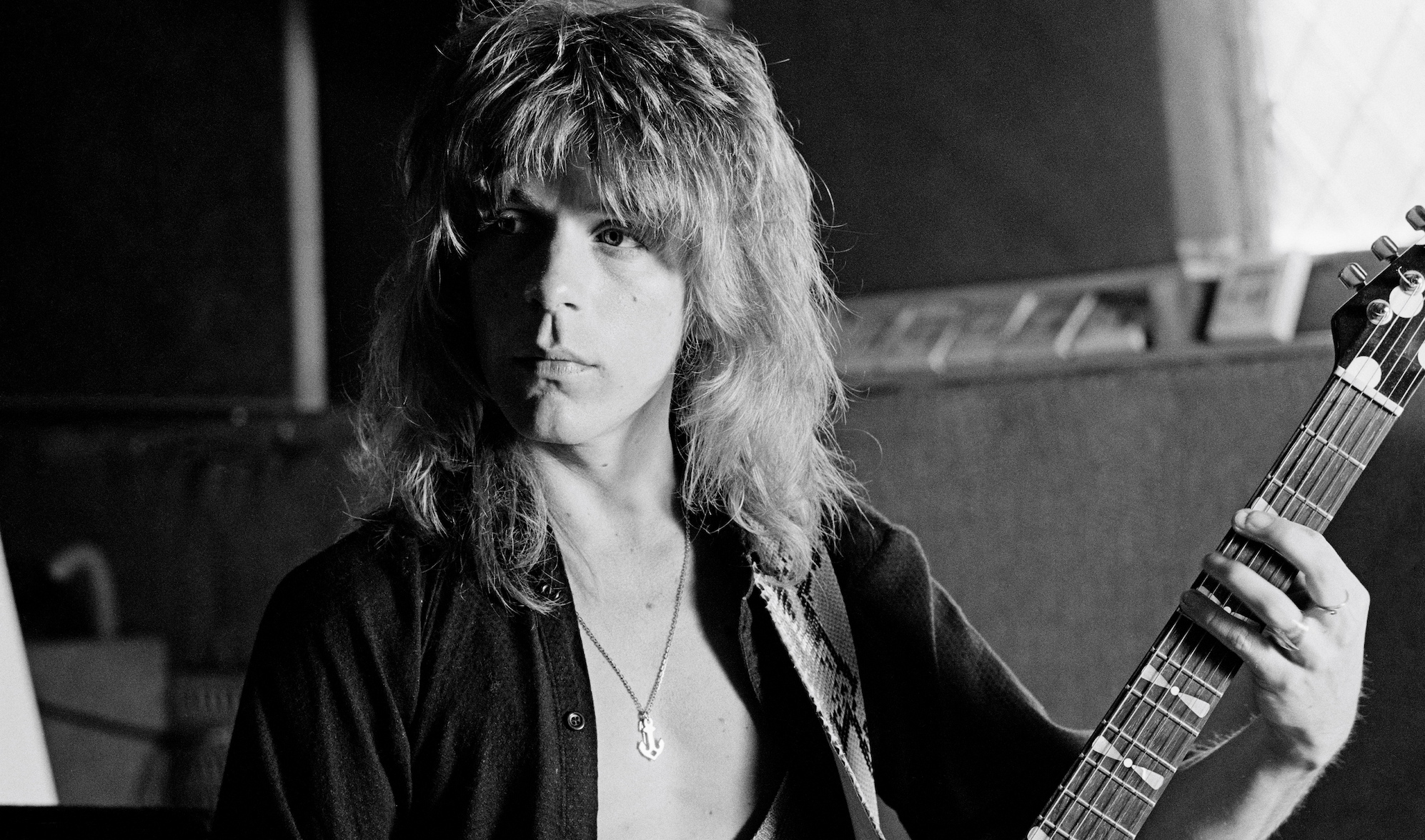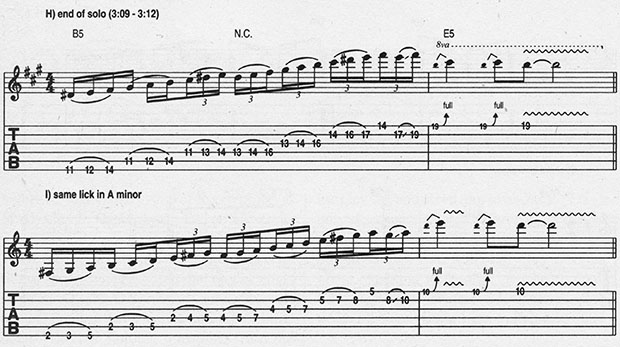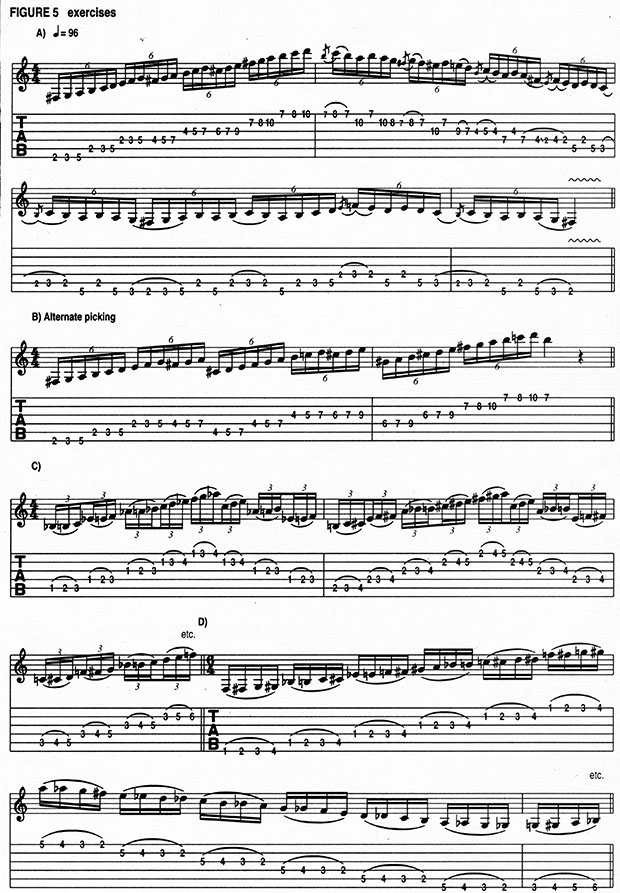Learn Randy Rhoads' warm-up exercises and more in this complete 1982 guitar clinic
The Ozzy Osbourne guitarist himself teaches technique and the Crazy Train solo

Few musicians in the history of rock have been as beloved – revered, really – as Ozzy Osbourne’s late guitarist and musical soulmate, Randy Rhoads.
Only 25 when he was killed in an airplane accident in 1982, Rhoads managed in a few short years to establish himself as one of the most innovative electric guitar players in the world.
On landmark Ozzy songs like Flying High Again, Crazy Train and Mr. Crowley, the guitarist wowed the world with solos and rhythm playing that managed to be explosive and tasteful, and a classical sensibility that was his alone. His premature death only served to solidify his legend, and his many fans keep his memory and spirit alive.
Rhoads reveals himself to be every ounce the dedicated - and utterly unassuming - guitar hero
Guitar World acquired a tape of a seminar given by Rhoads himself before an enthralled group of Randyphiles at Music City in Greensburg, Pennsylvania, on February 2, 1982, only six weeks before his death. Here is the transcription of the lesson presented that day, in which he reveals himself to be every ounce the dedicated – and utterly unassuming – guitar hero.
Whether fielding questions from the audience about the details of his rig or the complexities of his technique, Randy was the perfect gentleman.
And as his opening statement to the audience reveals, he was modest and humble, qualities that, as much as his guitar playing, endeared him to his fans: “This is only the second time I’ve ever done this, so please don’t expect me to just come out and handle things real well; I’m very nervous about speaking in front of people, so you’ll have to give me a hand by asking a lot of questions. I’ll do anything I can to help you out.”
Gear
What effects do you use when you play live?
All the latest guitar news, interviews, lessons, reviews, deals and more, direct to your inbox!
"I have a pedalboard that’s got an MXR Distortion +, an MXR 10-band equalizer, a chorus, an MXR stereo chorus, an MXR flanger, a Cry Baby wah pedal and a Roland volume pedal.
"I used them much more in the past than I do nowadays, but now our sound man is starting to add a lot more up front. Sometimes I use them more for quiet rhythm parts, just to enhance the sound. I never use echoes or anything for leads."
Do you have a preamp built into your guitar?
"No, I just have the Distortion + on the board, and I just keep that on all the time. My amps are Marshalls."
What speakers do you use in your cabinets?
"I use Altecs. I prefer those to Celestions because they’re very bright, clean speakers. I found that Celestion speakers are pretty dirty, and if you add a fuzz box to them they’ll sound terrible."
Do you ever have trouble with feedback?
"Yes, I have lots of problems there. For example, if you let go of the guitar for a second, it will feed back. You’ve got to play so that you’re covering your pickup. If I don’t want to do something quiet, I have to either use the volume pedal or click off the fuzz – otherwise my guitar will squeal. I’ve gotten used to playing that way."
Do you have a special tremolo unit on your Charvel Flying V?
"Grover Jackson, who owns Charvel, builds the guitars himself for me, and I use his tremolo units. There’s no perfect tremolo, except for maybe a Floyd Rose, but Grovers are very good. I have another Flying-V, the polka-dotted one, but it isn’t a Charvel, and I do have tuning problems with it all the time."
Influences
What kind of music did you play when you first picked up the guitar?
"I’m 25 now, so I don’t remember what I was playing when I was seven. I just played the guitar. One of the early things I remember was strumming [the flamenco guitar standard] Malagueñia on an old Spanish guitar. Later on I just started playing anything I heard on the radio: Gloria or Louie Louie or whatever."
What players did you admire growing up?
"I get asked that all the time: 'Who’s your favorite?' 'What are your influences?' If you play long enough, your influences are bound to change. I never had a phonograph ’til I was, I think, 16, so I couldn’t just sit and copy my favorite players. I had to listen to the radio, and I liked whoever was good.
"One of my favorites was Mountain and Leslie West – those harmonics and that sustain. I just thought Leslie was the greatest. But now, I don’t have a favorite- I just like anybody who plays guitar."
Did you take lessons or were you self taught?
"Mostly self taught. When I was young I took lessons – basic folk and classical training - then I started playing rock. I’m actually taking lessons now."
You’re taking lessons now?
"I did when I was in England."
Who was your teacher?
"Anybody. I just take lessons from anybody, like when I have a day off or something. I’ll find someone in town and just pick their brain."
Were you in other bands before you hooked up with Ozzy?
"I was in a local band in L.A. called Quiet Riot for five years. I was still with them when I met Ozzy, so I had to leave. Other than that, I was just in some garage bands and other little things that didn’t work out."
Didn’t you put out a couple of records with Quiet Riot?
"Yeah. We had a record deal, but we were very young and we lost the deal. It just fell apart. The records were later released in Japan. I was 17 years old and the producer wanted to make us sound very much like a pop band. I mean, if you hear it, there’s hardly any guitar on it."
What do you think of other guitarists, like Michael Schenker?
"I think Michael Schenker is excellent, a great rock player. He’s very melodic and he plays with lots of feeling."
Are there any other players you’d put in that category?
"Oh, I could name a hundred. I mean, everybody who’s out there is really good at what they do. Eddie Van Halen is fantastic, Ritchie Blackmore…"
There are critics who accuse you of copying Eddie Van Halen. Are you influenced by him?
"Well, we’re both from the same town and we were both in local bands. It seemed like everybody in L.A. was a lead guitar player, and we all played very similarly. Everybody used to say we all sounded very much the same."
What do you think of Angus?
"Angus Young? I think what he does, he does great. He’s so into it."
You have to put down something that suits the song well
Tony Iommi?
"I didn’t know too much about Black Sabbath when I met Ozzy. That’s probably why I get along with Ozzy – we’re different and come from different musical backgrounds."
Does he ever talk to you about why he left Black Sabbath?
"Oh yeah, all the time. I guess they just weren’t getting along. They had been together a long time – 14 years or something like that."
When you write a lead, do you focus on the melody or go for more of a technical, dazzle-type thing?
"It depends on what the progression is and what the mood of the song is. You have to put down something that suits the song well. I like to play melodically."
What would you say is important for having a good band?
"Aside from being able to play well together, you all need to be on the same level mentally. If one guy wants to go out and earn money in a lounge and another wants to go out and do originals, then you’ve got a conflict. I think you should all want the same thing out of your band and like the same kinds of things. That’s a good start, I think."
Is it true that when you auditioned for Ozzy you didn’t even have to play? That you just plugged in your guitar and tuned up?
"Yeah, it was even more embarrassing than this. [laughs] I thought I was gonna play with a band. All I brought was this little Fender warm-up amp. When I got there, everyone was behind the glass, and in the room was just me and my amp. And they said, 'Okay, play.' And I thought, You’ve got to be joking. I mean, what could I play?
"I didn’t have any other musicians with me. So I just started warming up, then Ozzy said, 'Yeah, you’re good.' I had only played for a few seconds. Then I got kinda mad and thought, Well, you haven’t even heard me yet."
How to play like Randy Rhoads
Can you play some stuff for us now?
"What would you like to hear?"
How about the solo breaks in Over the Mountain, where you play the fast, unaccompanied licks?
"The first lick in that section is played like this. It’s in E minor. Then the next break is just a series of real quick pull-offs to open strings , with a tremolo bar dive added at the end. That’s all there is to it. There’s just one real lick in it; the rest is just, oh, noise."
Play the solo to Revelation (Mother Earth).
"Okay. It’s in E minor and is very similar to a harmonic [minor] scale. It starts on E flat [D#] and goes up to E flat [D#] again at the very end. For the next lick, I use the edge of the pick to make the riff sound an octave higher.
"It sounds a lot different live, because I’m trying to slow it down so you can see what I’m playing. Then the next bit is played like this. The only weird notes in it are the E harmonic minor parts."
Could you play the fretboard-tapping riff from your Flying High Again solo?
"Sure. You start with your left-hand index finger on C# [1st string/9th fret], and you tap with your right hand on a high A [1st string/17th fret]. When you move over to the B string, both hands move up one fret. You then repeat the process on the G and D strings, which finishes off the lick.
"The next four bars of the solo are played exactly the same way, but begin down a fourth, in E. The same process is repeated, shifting up one fret as you move to each lower string."
What key is Flying High Again in?
"It’s in A. When I play Crazy Train and then go to play Flying High Again, I’m a half-tone out."
Did you tune differently on Diary of a Madman as compared to Blizzard of Ozz?
"Yes, we tuned down one half step when we recorded Diary."
Why?
"When we were recording the second album, the tuner we had was miscalibrated, and I began to like the sound of being tuned down a half step for some of those songs.
"A lot of people tune down a half step, but I’d never done it before then. It gives a much heavier sound to the chords, and it just gives you a meaner sound, overall. When we play live, some of the songs are tuned down and some are not, so I use different guitars which are tuned accordingly."
Could you play the beginning of Crazy Train?
"Yeah, sure."
Are you using a wah-wah on that part at the beginning?
"No, just a distortion pedal."
How do you play the main rhythm part to Crazy Train?
"Like this. The chord progression is A E/A D/A A; the open A string is played against all of the chord voicings. The fast lick at the end is played with pull-offs to open strings. At the end of the verse section, I use chordal inversions, like this.
"Each chord is played with the third in the bass [the major third appears as the lowest note in the chord voicing]. Here, the chord progression is A/C# E/G# D/F#, with the third of each chord played on the low E string."
How do you play the rhythm part to the section that leads into the chorus?
"That part’s played like this. On the second verse, I add a riff when I get to the F#m chord at the end of the progression, like this."
How do you play that really fast, ascending lick during the second chorus?
"That riff is sort of a 'fake'; I don’t even do that lick live, because it sometimes sounds really sloppy."
"I used to play it live, though. It’s just an [arpeggiated] F# minor triad shape that slides up the neck chromatically [ascending one fret at a time], but I’m going to lie and say that it’s played perfectly. All it is is this, after which I hurry into a pick slide before the lick dies. When you play loud, you can get away with playing a lick like that without playing it perfectly."
Did you use tapping in the Crazy Train solo, too?
"Yes, the solo begins with this tapped lick, after which I play a slow trill that slides down one whole step."
How do you play the last lick in the Crazy Train solo?
"It’s in F# minor. I’m trying to remember it because I don’t do that run live anymore. To the best of my recollection, it’s played like this [FIGURE 4H]. The lick begins one and a half steps below F#, on D#. If you were to play the lick in A minor, it’d be done like this."
Is there a term that describes these kinds of riffs?
"These riffs are all articulated with hammer-ons. I know of no other particular name to describe them."
Do you do any particular finger exercises before you go out on stage?
I have some exercises where I use the first, second and fourth fingers in order to warm up. Here’s one [FIGURE 5A] in which I’m just sort of “wandering around.”
It’s good to do exercises like this [FIGURE 5B] using “alternate picking” [down-up-down-up, etc.], and to keep speeding it up. I used to like practicing licks that contained a lot of hammer-ons, like these [FIGURES 5C and D], but I don’t do those things that much anymore. These licks are great, though, for warming up your fingers before a gig.
Could you show us those unusual chords in Diary of a Madman?
"Sure. The song begins with an A [major triad], with the flatted fifth added to the chord. So, you’ve got the root note, A, the third, C#, then the flatted E, with the open high E on top. The sound of the Eb and the E together gives you that dissonant sound.
"As you can see, the notes on the D, G and B strings descend as the chords progress through the first five bars. This section ends with an arpeggiated Emaj9 [Eadd2] chord, with the seventh, D, dropped in at the end. The verse section features virtually the same chords as those used for the first four bars of the intro, but played in a different time signature.
"This section ends with some different chords played in yet another time signature [6/8]. Then there’s the heavy, distorted riff which appears a few times during the song. Here’s how it’s played during the intro. Following the bridge and the interlude, I shift to this heavy rhythm guitar part.
"The last chord in bar 1 [the two-note Em] is very similar to C7, but I think of it as E diminished, as both chords are built from almost the same notes [both chords comprise the notes G, Bb and E]. Right before the interlude, I play a heavily distorted riff that is similar to the first heavy riff, which is in A minor, but is here transposed to E minor. This is followed by the interlude, which begins with an Em(add9) chord."
When you take your spotlight solo each night on stage, do you ever improvise or do you always play the same solo?
"It’s basically the same. But it depends on the sound I have onstage: if it’s a bad sound, I just do a basic form of the solo. But if it sounds really good, I like to carry on with it."
Interview transcription by Anthony Urso
Guitar World Associate Editor Andy Aledort is recognized worldwide for his vast contributions to guitar instruction, via his many best-selling instructional DVDs, transcription books and online lessons. Andy is a regular contributor to Guitar World and Truefire, and has toured with Dickey Betts of the Allman Brothers, as well as participating in several Jimi Hendrix Tribute Tours.




